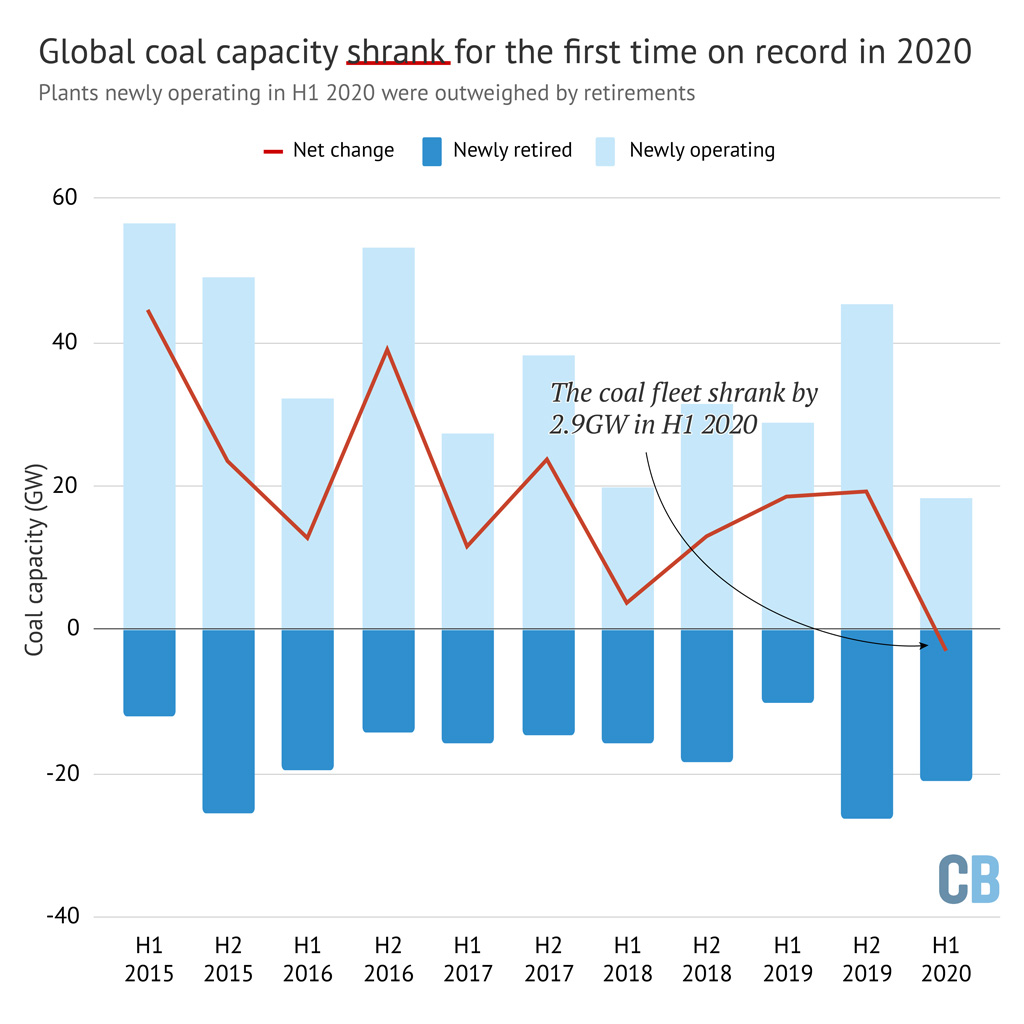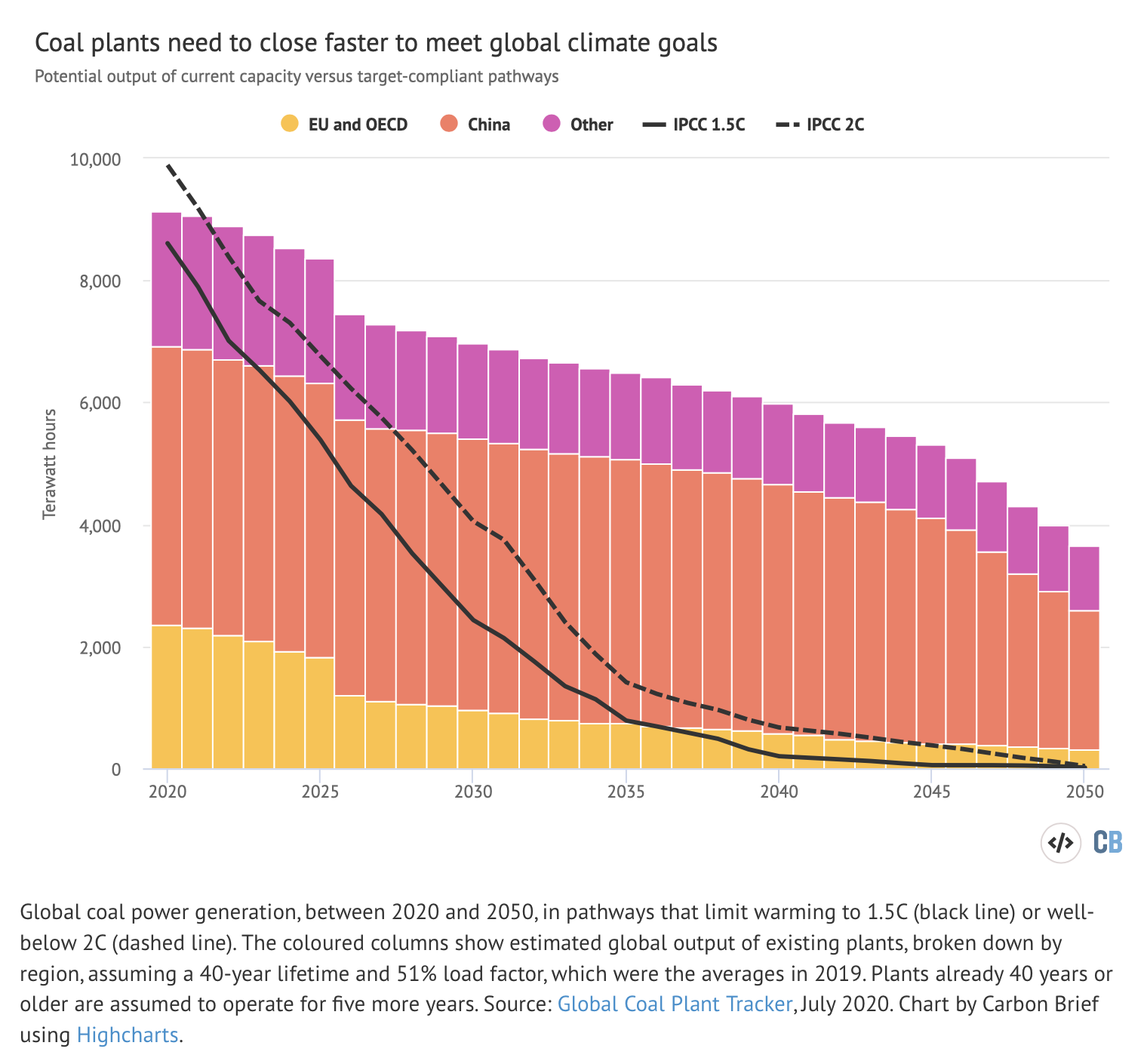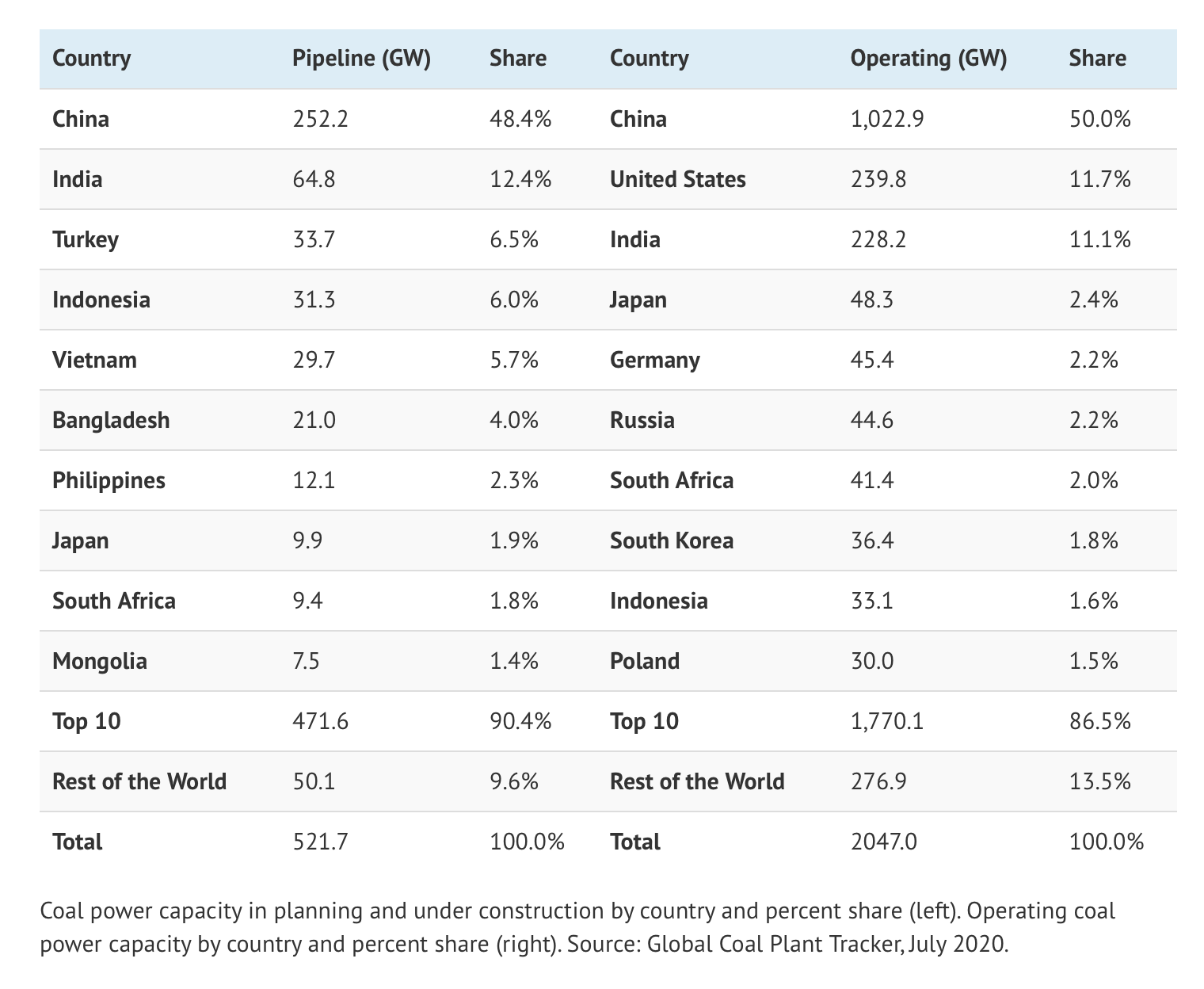The global coal fleet shrank for the first time on record in 2020
In the first half of 2020 more capacity retired than the amount opened! From 1 January to 30 June, 18.3GW started operating and 21.2GW retired, leading to a net decline in the global coal fleet of 2.9GW. For comparison, the global coal fleet had grown by an average of 25GW every six months over the previous two decades, from 2000-2019.

The 2.9 gigawatts (GW) decline in the first half (H1) of 2020 takes the global total down to 2,047GW. Among the main reasons:
- Slowed commissioning due to the Covid-19 pandemic;
- Record retirements in the EU from strengthened pollution regulations.

Who opened and closed coal plants in 2020? Among the main countries that opened new coal plants in 2020 are China (11.4 GW) and Japan (1.8 GW). In addition, a 1.1 GW coal plant was recently opened in Germany, but it will be decommissioned in accordance with the 2038 emission reduction policy.

The main global players that decommissioned coal plants are the EU-27 and the United Kingdom (-8.3 GW), the United States (-5.4 GW), and China (-1.7 GW).
Nevertheless, achieving global climate goals requires a much faster reduction in coal energy use.
- 189.8 GW of coal capacities is currently being built worldwide, with another 331.9 GW planned.
- The coal power industry continues to be concentrated in a handful of countries, with just ten comprising 90% of the pipeline for new coal plants and 86% of the operating fleet.
- China alone is now home to half of all operating coal power capacity (50%), as well as half of the capacity in the pipeline (48%), up from a 34% share of the global coal pipeline in mid-2018. China has a loyal emissions policy, unlike most countries in the world.


